Finnish endangered mosses
Jonna Luostari
Artist resume
jonna@jonnaluostari.com
Instagram: @bisousj
Jonna Luostari is an illustrator, visual artist, and designer living and working in the Helsinki metropolitan area. In her artistic work, Luostari combines traditional and digital techniques as well as photography. Her works often address the interactions between nature and urban life, both positive and negative.
MOSS - Endangered Mosses of Finland
is a series of gouache paintings by Jonna Luostari depicting moss species in Finland that are classified as vulnerable, endangered, or even extinct. The series was created just before Christmas 2023 when Luostari, while studying the list of endangered species, noticed the diversity of mosses included. Luostari decided to paint a Christmas calendar for social media featuring different endangered moss species of various appearances, genera, and habitats.
A total of 24 mosses were selected for the project, one for each day leading up to Christmas Eve. The paintings are 12cm x 15cm in size.
Based on the 2019 Red List, 313 moss species are under threat in Finland.
Did you know that the collections of the Finnish Museum of Natural History contain about 710,000 moss specimens? The oldest samples date back to the 18th century, and about 2,500 new samples are added annually. (Source: helsinki.fi/luomus )
Dicranodontium denudatum
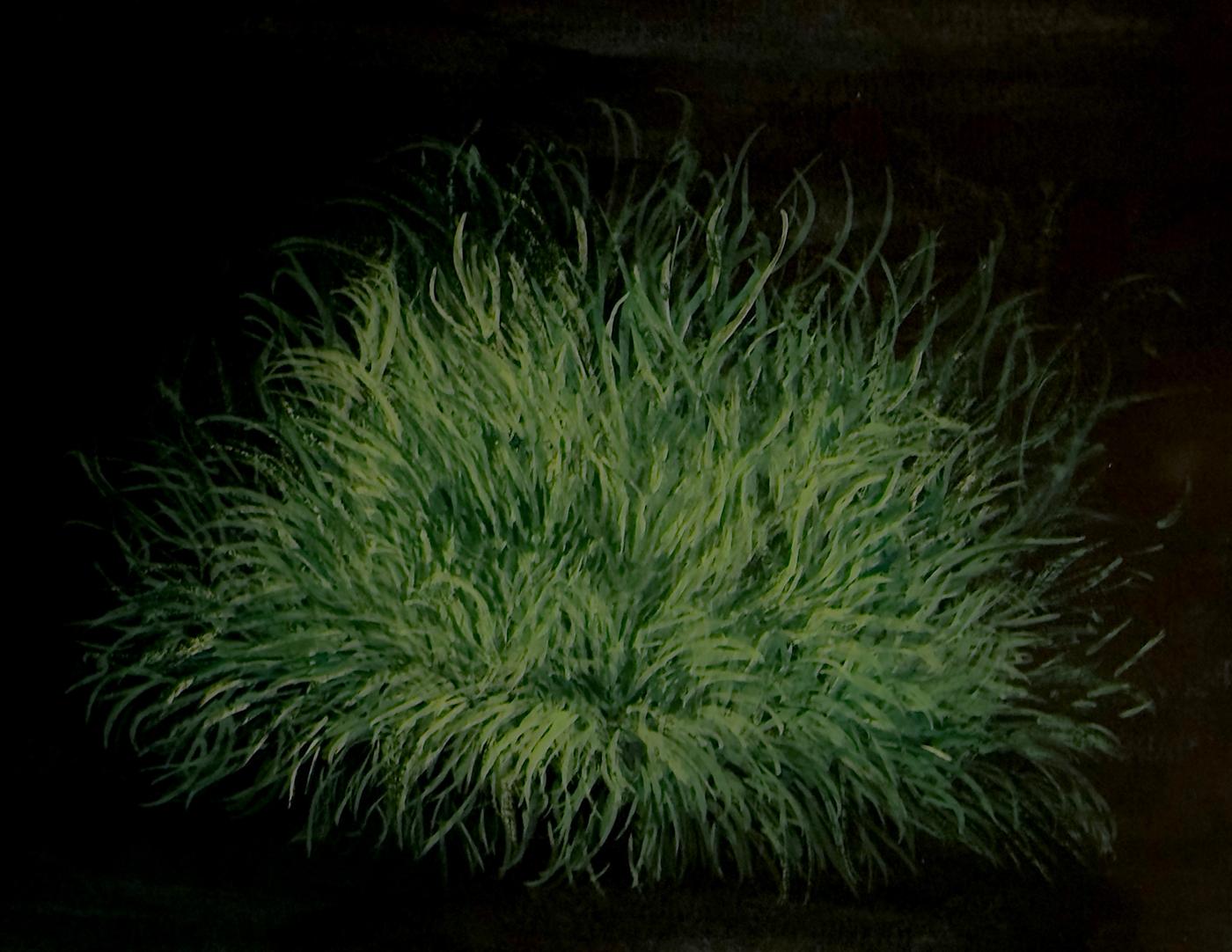
Status: Critially Endangered
Dicranodontium denudatum is relatively rare throughout its extensive range and prefers a maritime climate. In Finland, it is a southern and very rare species.
Dicranodontium denudatum has been collected from Vantaa in Uusimaa between 1904–1932 (Pakkala) and from Helsinki between 1904–1928 (Pasila). The Pasila occurrence was likely destroyed due to construction, and the species has not been found in Pakkala since. It was therefore considered extinct in Finland in earlier assessments. However, the moss was rediscovered in 1995 near Haukkalampi in Nuuksio, Espoo. The population appears healthy with about 10 separate patches over approximately 20 meters, totaling around 100 cm².
The main threat to the species is construction, but wear and forestry also contribute to its decline. The only current population is surrounded by a shadowy, relatively poor condition spruce forest. The simultaneous, large-scale fall of the forest (e.g., in a storm) could threaten this shade-loving moss.
Dicranodontium denudatum grows on moist, very shady, nutrient-poor rock faces and their bases, sometimes on decayed wood and peat-rich soil. A moist microclimate is crucial for it.
Hymenoloma compactum
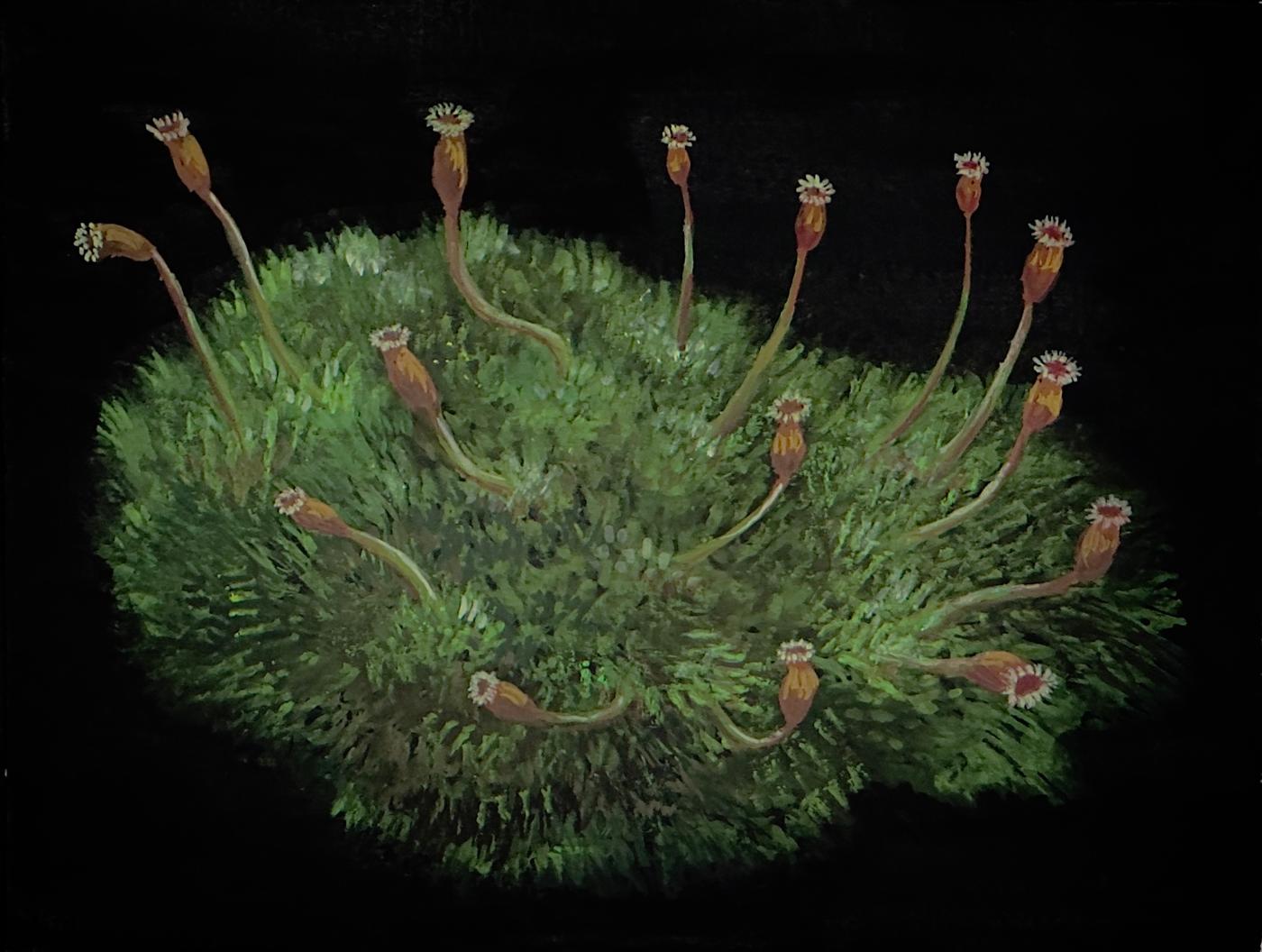
Status: Critically Endangered
In Finland, only three observations of arctic kettle moss have been made.
Bryum wrightii
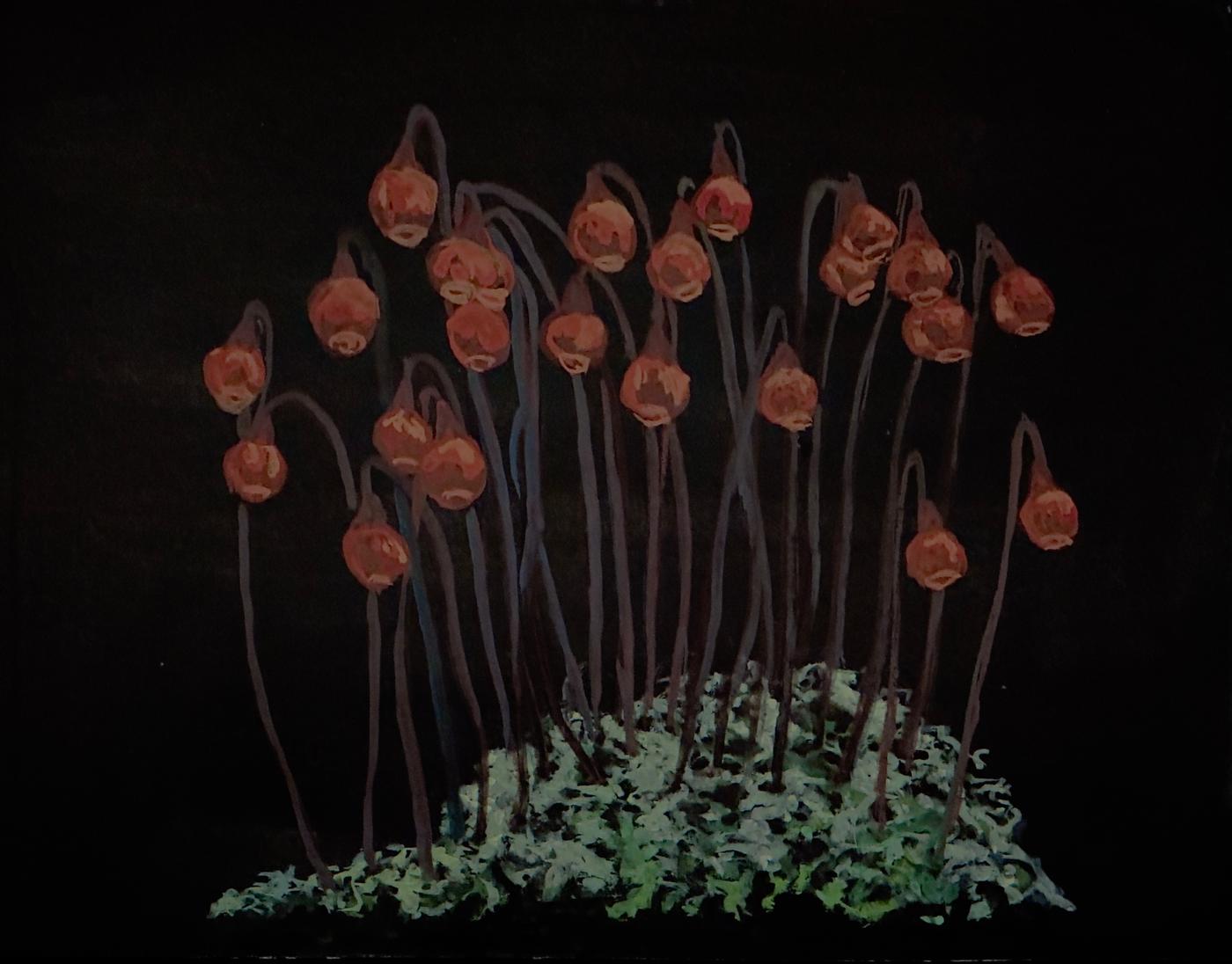
Status: Critically Endangered
Bryum wrightii grows widely across the northern hemisphere’s arctic regions in Eurasia up to Japan and in North America. In Finland, it is an arctic species with five occurrences in Enontekiö’s calcareous mountains.
Encalypta brevipes
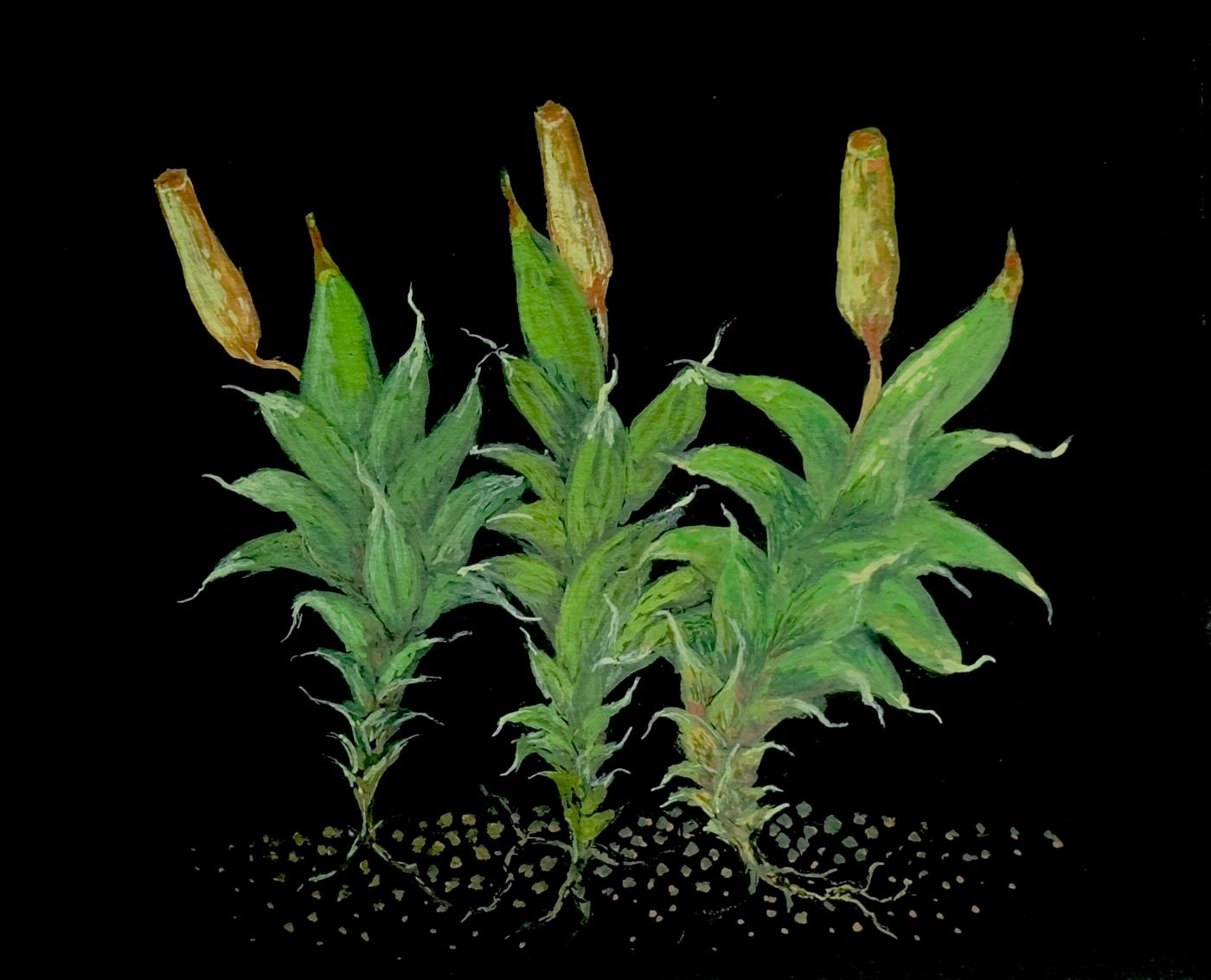
Status: Critically Endangered
Ephemerum recurvifolium
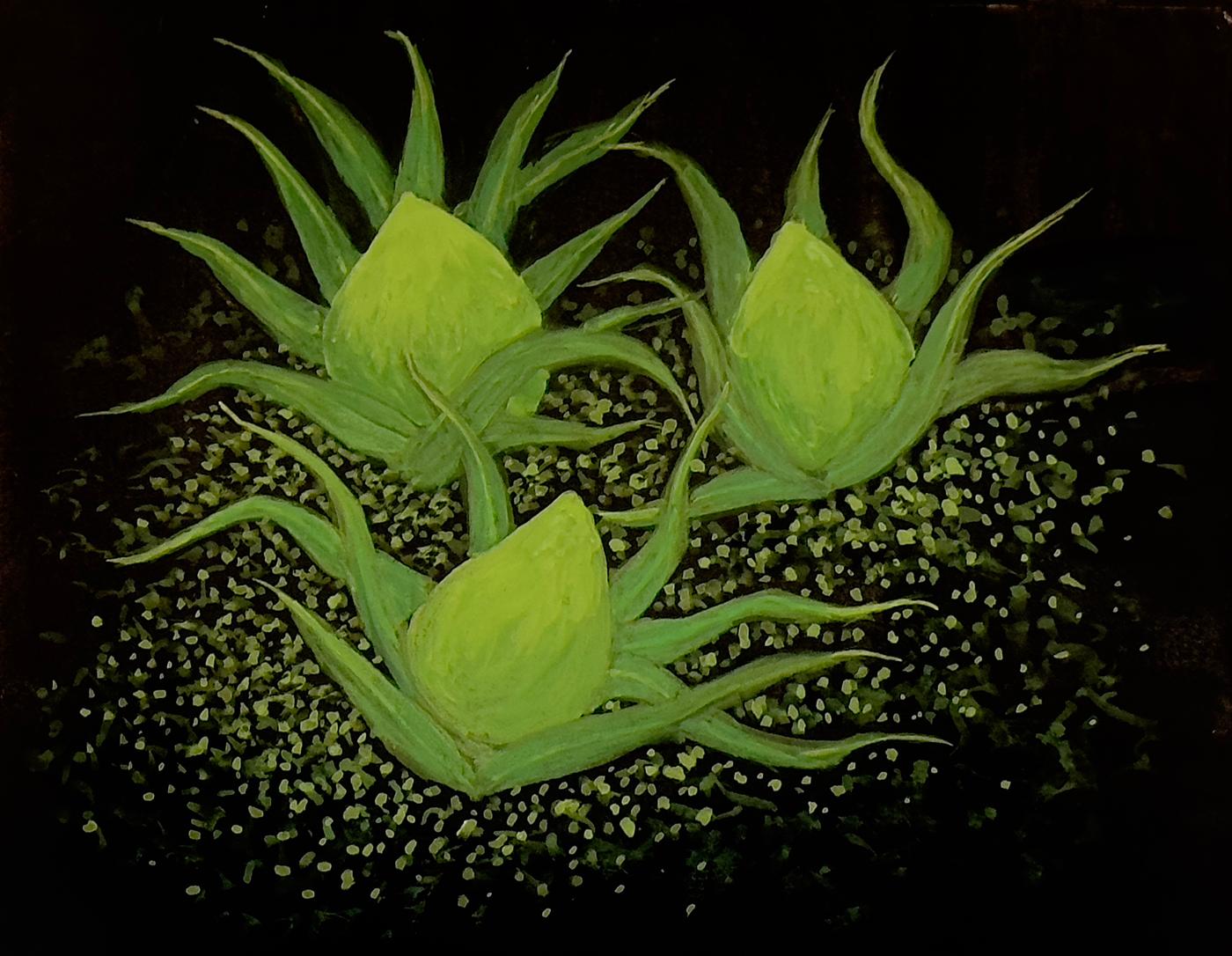
Status: Extinct
The main distribution area of Ephemerum recurvifolium includes Western and Central Europe up to Ukraine, the Mediterranean countries, and North Africa. It is unknown in the Baltic region. In the Nordic countries, it is only found in Sweden, where there are a few occurrences.
In Finland, the moss was collected multiple times from Saltvik in Åland in the late 1800s, most recently in 1883. Its extinction is likely due to overgrowth of suitable habitats following the end of grazing and other agricultural changes like field drainage. The use of chemical fertilizers has also been detrimental.
Ephemerum recurvifolium thrives only as long as the site remains open, favoring calcareous clay soil.
Conardia compacta
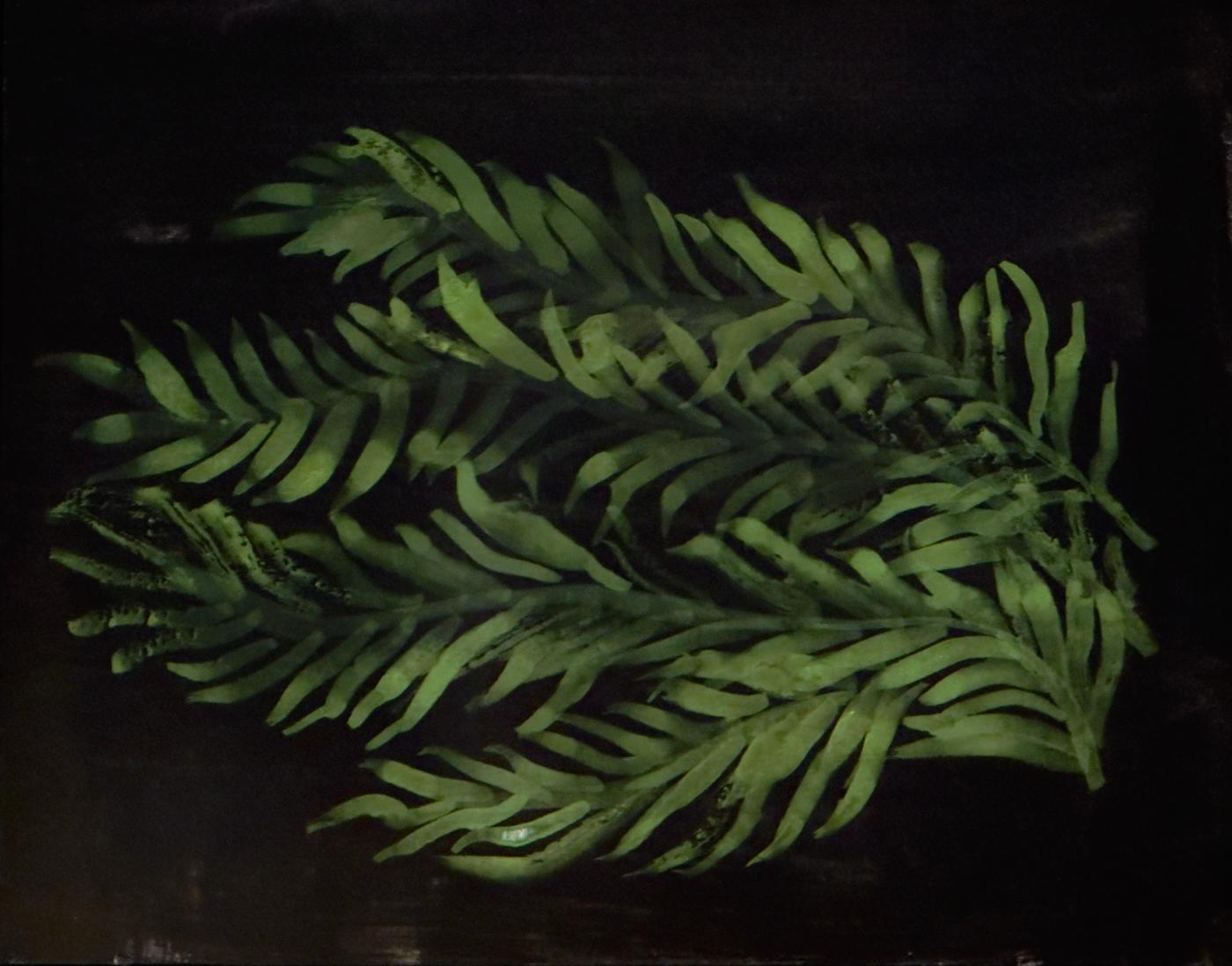
Status: Critically Endangered
Conardia compacta primarily grows in the temperate and cool zones of the northern hemisphere’s coastal areas.
It was found in Finland in 1968 in Jomala, Åland, in a meadow by the Lumparn shore. Despite searches, it has not been rediscovered, likely due to its small size making it hard to detect. The species is naturally very rare in Finland, likely at the edge of its distribution range.
The main threat to Conardia compacta is the overgrowth of coastal meadows due to the cessation of grazing and the eutrophication of the Baltic Sea.
It grows in calcareous environments on land and rocks near the sea, usually in moist areas. Inland, it prefers moist, shady calcareous rocks.
Grimmia mollis
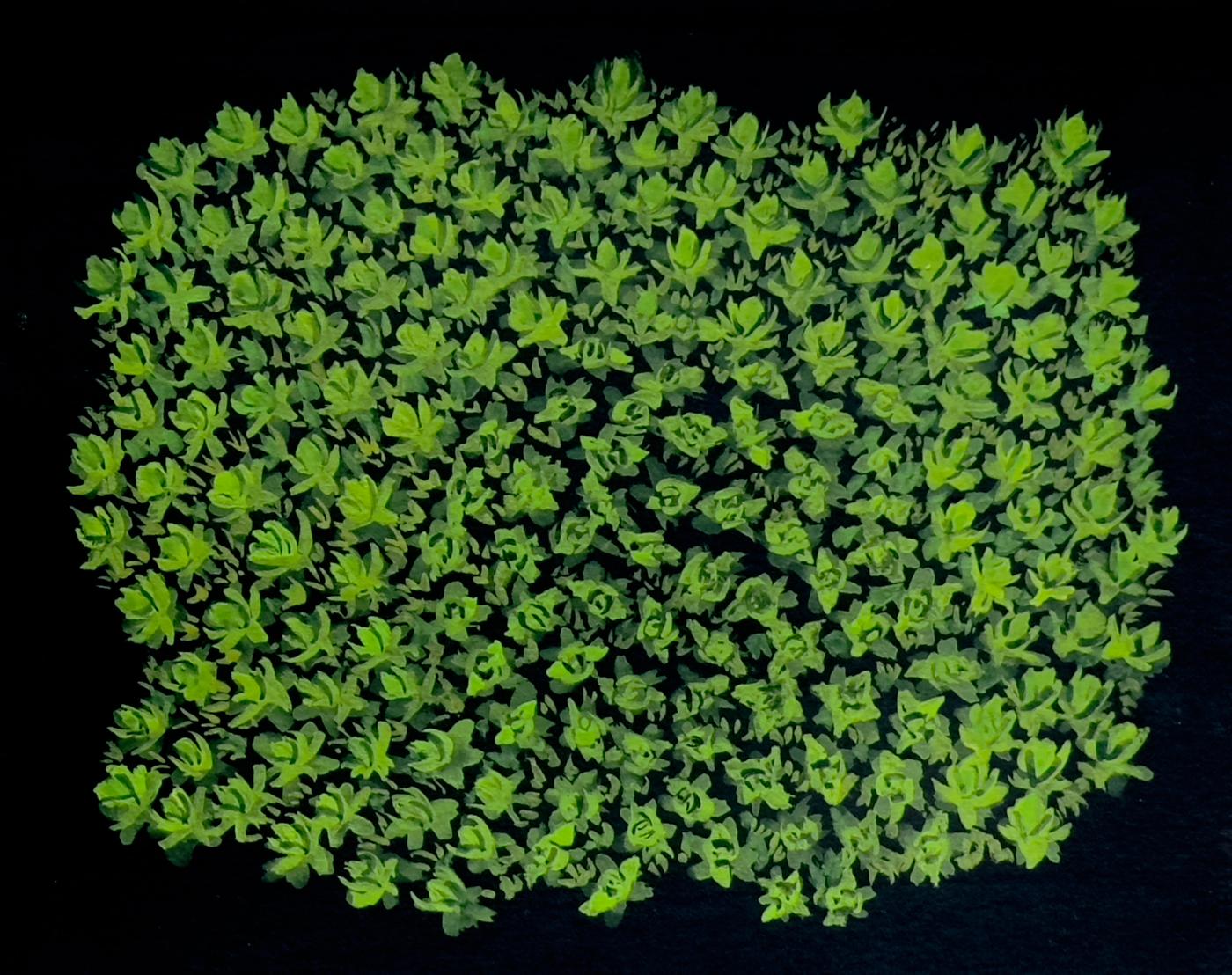
Status: Critically Endangered
Grimmia mollis is circumpolar, found in the northern areas of the globe and in the mountains of Central Europe, Asia, and North America, though it is nowhere common.
In Finland, it is only found in Lapland. The most recent observations are from Enontekiö’s Halti Ridnitsohkk (2006), Urtaspahda (2007), Urtasvaara (2007), and Ylläs fell in Kolari, Kittilä (1997).
Grimmia mollis grows in the tundra on moist rock faces, flowing water cliffs, and stones, particularly by meltwater streams from lingering snow patches, sometimes submerged.
Dicranum tauricum
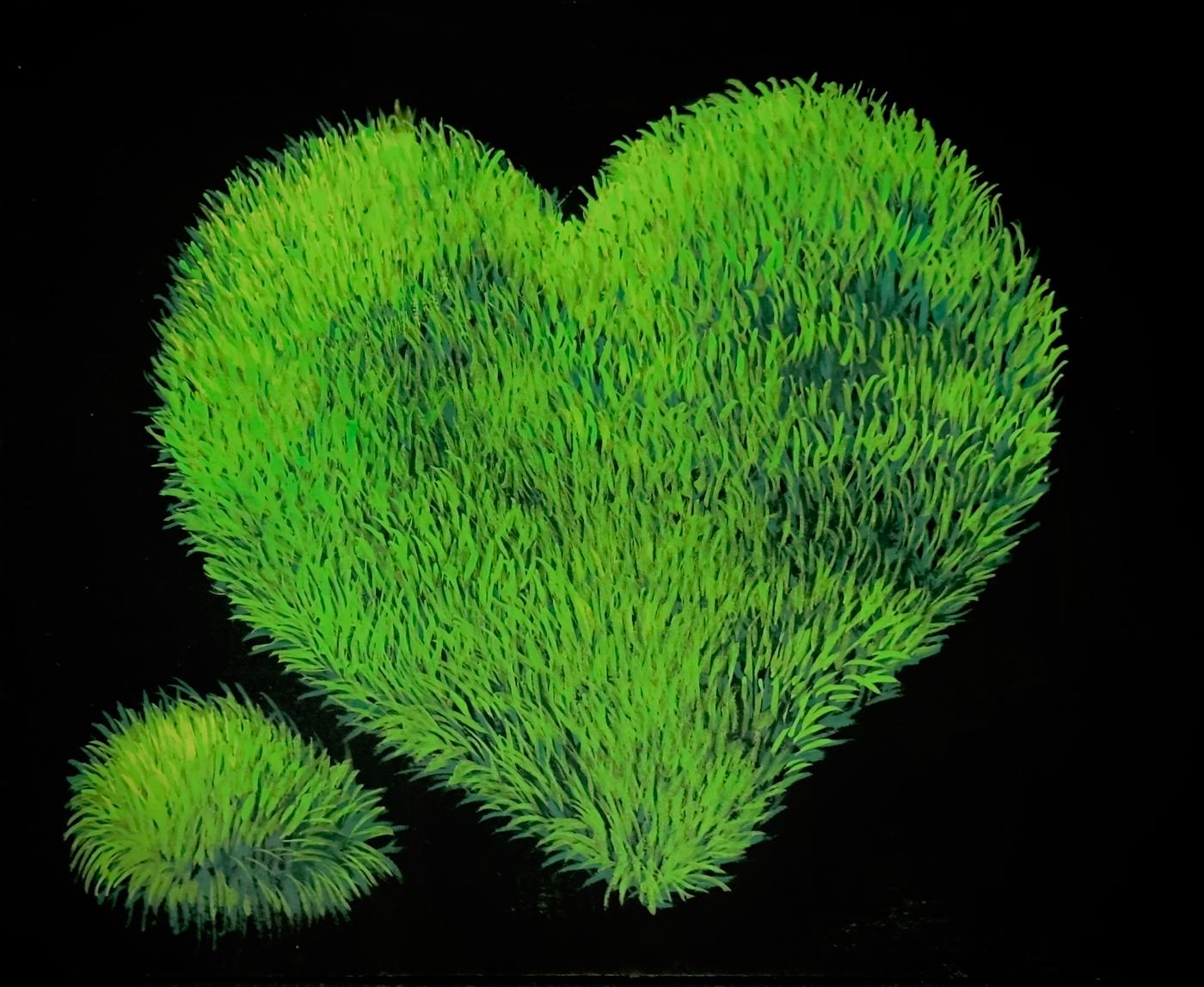
Status: Critically Endangered
In Finland, there have been 76 observations of Dicranum tauricum.
Pseudocalliergon lycopodioides
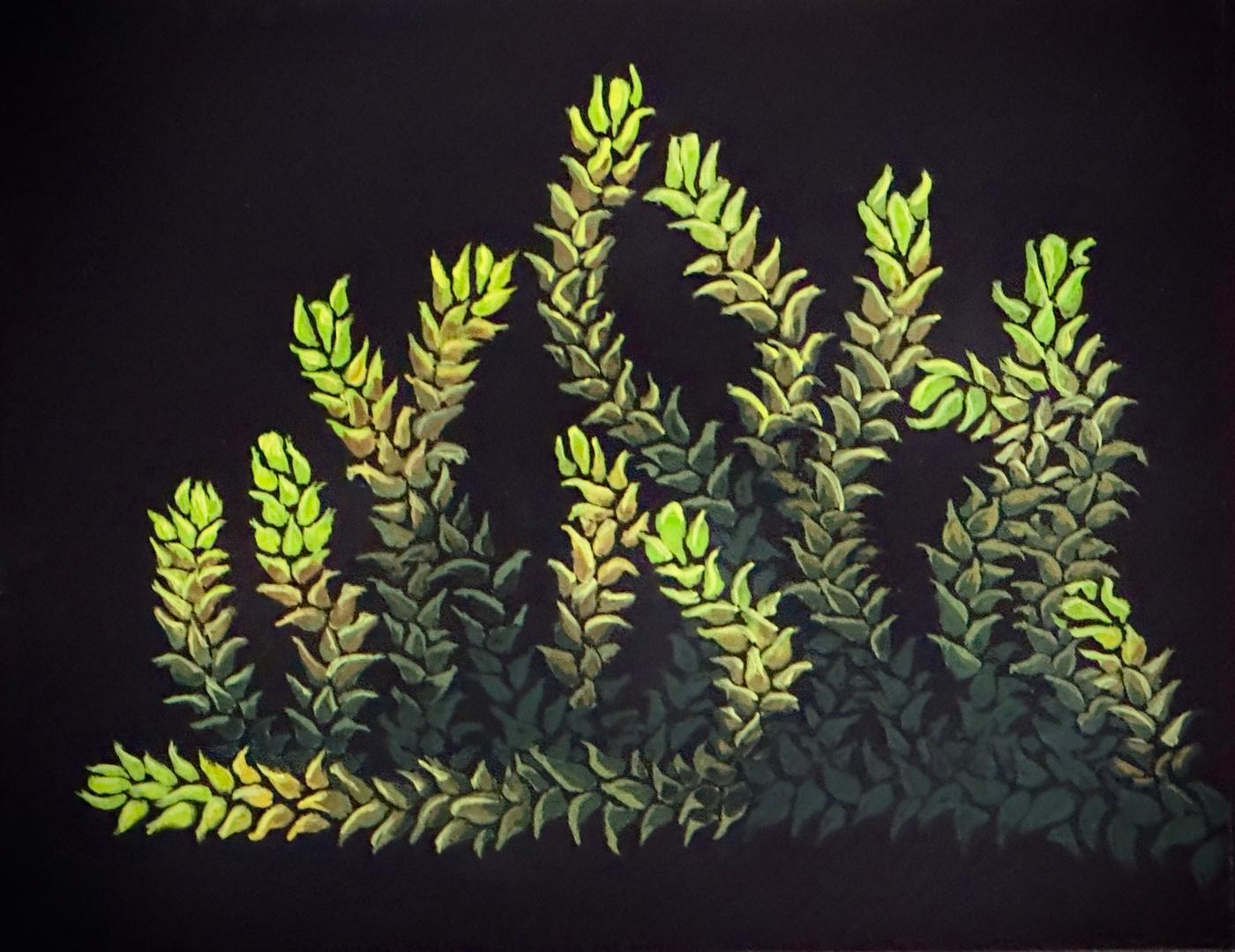
Status: Vulnerable
Pseudocalliergon lycopodioides is only found in Europe in the temperate zone and coniferous forest areas with calcareous soils.
In Finland, it is rare and its distribution is fragmented, with a total of 84 known occurrences, of which just over thirty are current. Many current occurrences are small, but some sites have large and healthy populations. Nearly half of the known sites (39) are in Åland.
The moss requires calcareous habitats. It grows on thin peatlands, marshes with calcareous soil, moist calcareous meadows, rocky meadows, and periodically wet depressions in rocks. In the north, habitats are often in open depressions that are wet in early summer but dry up later in the season.
Grimmia arenaria
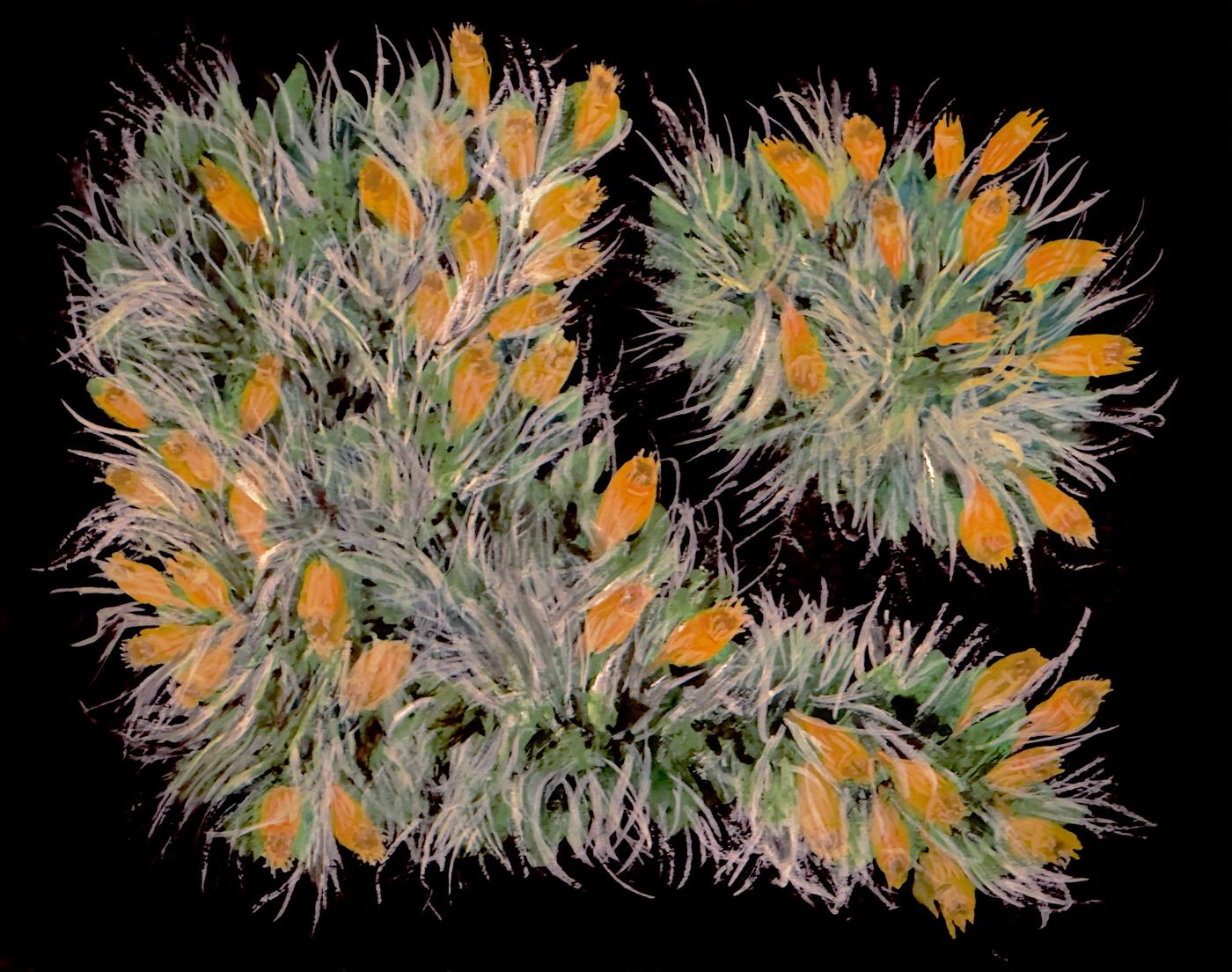
Status: Critically Endangered
In Finland, there have been 30 observations of Grimmia arenaria.
Riccia ciliate
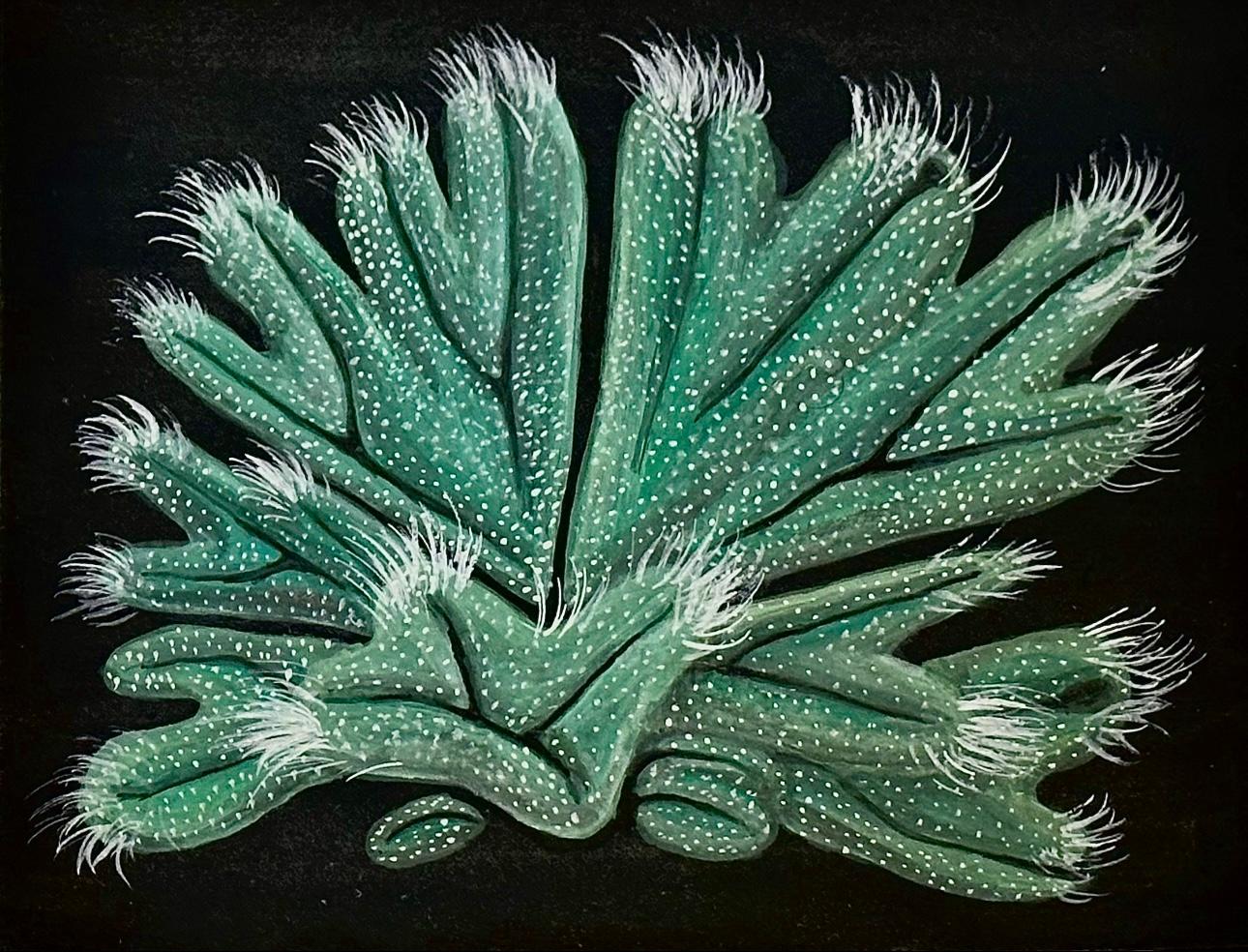
Status: Critically Endangered
The nominal subspecies, ssp. ciliata, found in Finland is present in most of southern and central Europe as well as Turkey. It is a continental steppe variety.
Finland has one confirmed site from 1877 in Järvikylä, Joroinen, Northern Savonia.
Riccia ciliate grows primarily on periodically wet rocks and shores on bare soil in Scandinavia. The Northern Savonia finding was on a rye field.
Calypogeia suecica
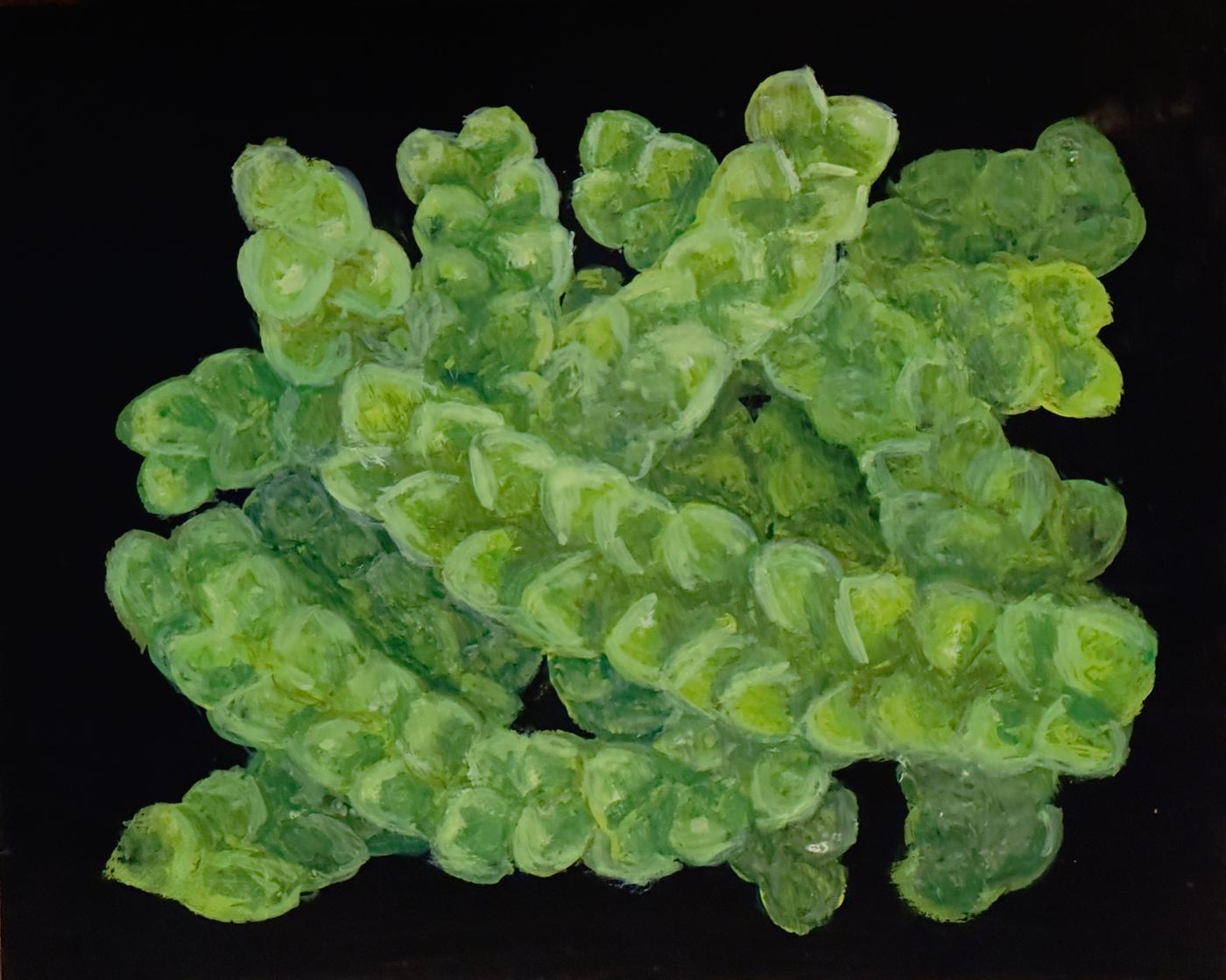
Status: Critically Endangered
Calypogeia suecica has a slightly maritime distribution in the coniferous forest zone of the northern hemisphere.
In Finland, there are about 65 known occurrences. Half of these are old and some have been confirmed extinct, especially in the southern parts of the country. For example, there have been no observations from Åland since 1905.
Continuity of decaying wood is essential for the Swedish liverwort.
Dichelyma capillaceum
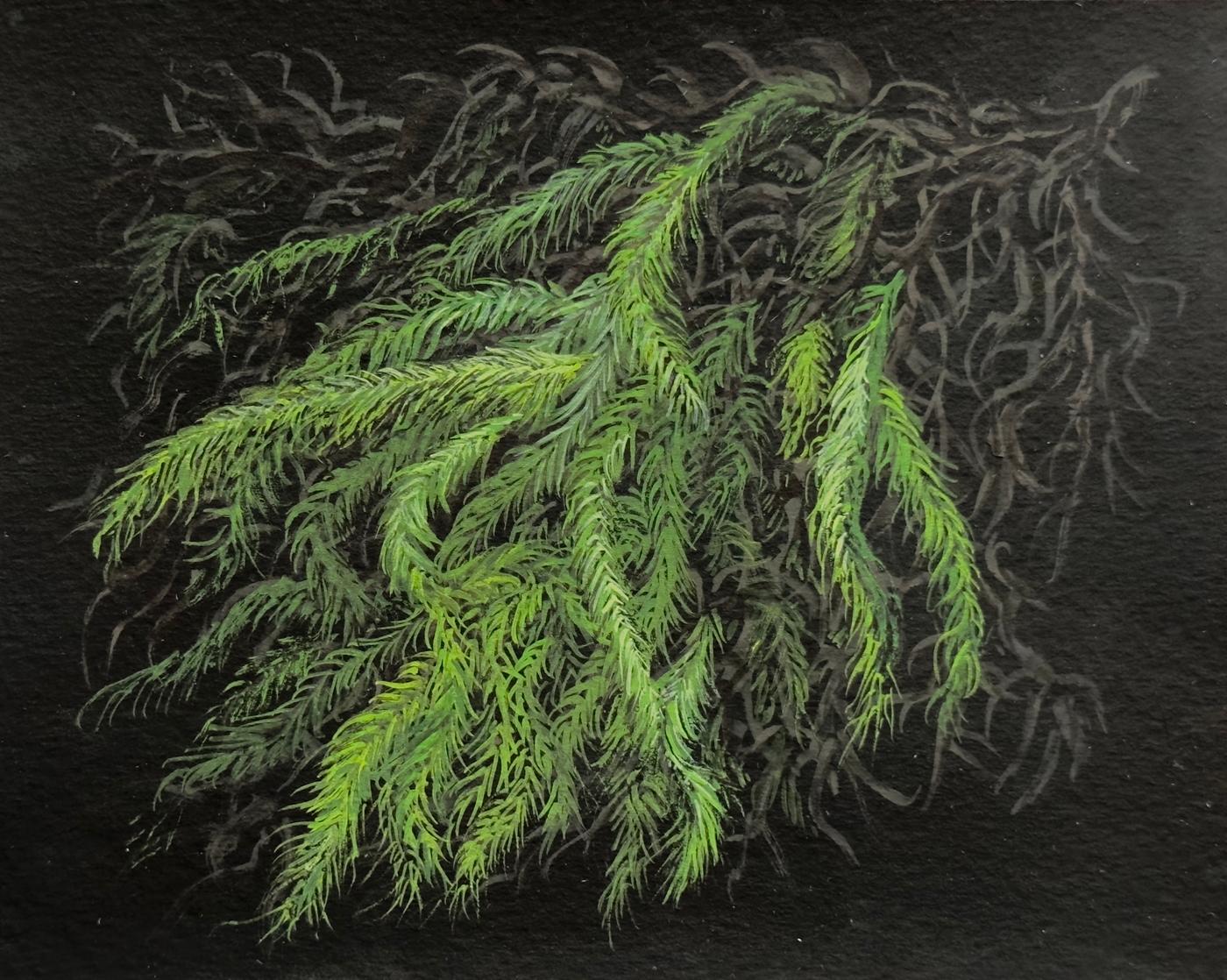
Status: Critically Endangered
Dichelyma capillaceum is mainly found in western Europe and North America. In Finland, it has been found as a rare species from the southern parts of the country up to Kainuu.
Dichelyma capillaceum grows at the water's edge of streams, rivers, or lakes on the bases of trees and shrubs, roots, fallen logs and branches, and stone surfaces. Typical substrates include black alder and willow, though other willow species, grey alder, and birch also suffice, as does swamp myrtle.
The species is long-lived.
Orthothecium rufescens

Status: Vulnerable
Orthothecium rufescens is widely distributed in Eurasia and North America in arctic areas and mountains with calcareous soils. It is found in Russia in the Republic of Karelia in the Paanajärvi area.
In Finland, the population is small and fragmented. Orthothecium rufescens grows rarely in Kuusamo and in the northwestern calcareous fells.
It requires calcareous soil and grows on thin mineral soil on shady, moist rock faces, terraces, and crevices, sometimes also on calcareous marshes.
Cynodontium jenneri
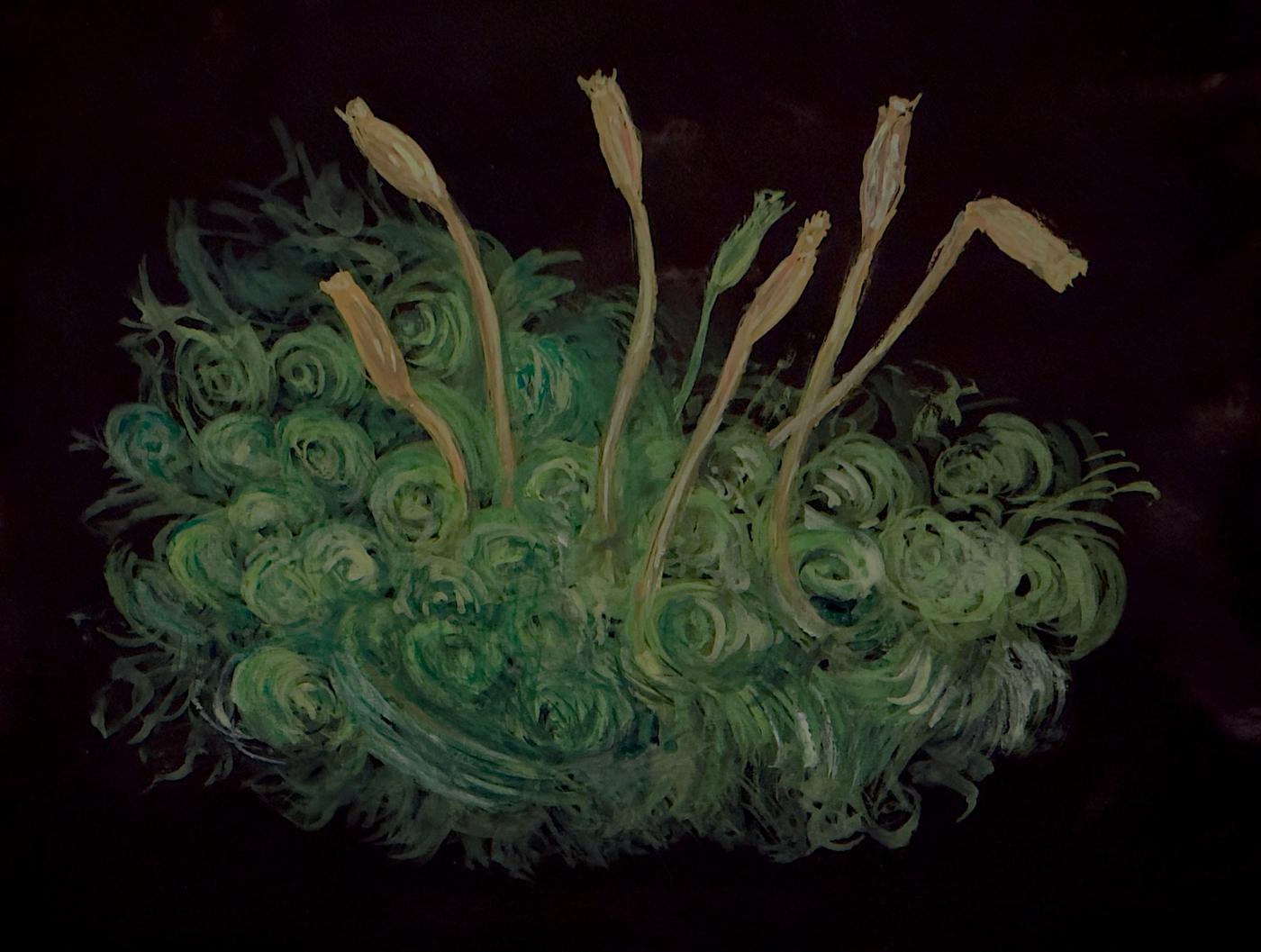
Status: Extinct
Cynodontium jenneri is found in Western Europe and North America in temperate maritime areas. In Finland, it was discovered only once, in Åland in 1872.
Cynodontium jenneri grows in tufts on semi-shady cliffs and ravines, favoring a moist microclimate and often occurring on east- or north-facing silicate rocks.
Archidium alternifolium

Status: Critically Endangered
Archidium alternifolium grows widely in the northern hemisphere's temperate and subtropical zones and is also known from Australia.
In the Nordic countries, it is a southern species.
In Finland, it is rare and southwestern in distribution, historically always somewhat rare. It was first observed in 1859 in Åland. There have been a total of just over twenty known sites.
Aongstroemia longipes
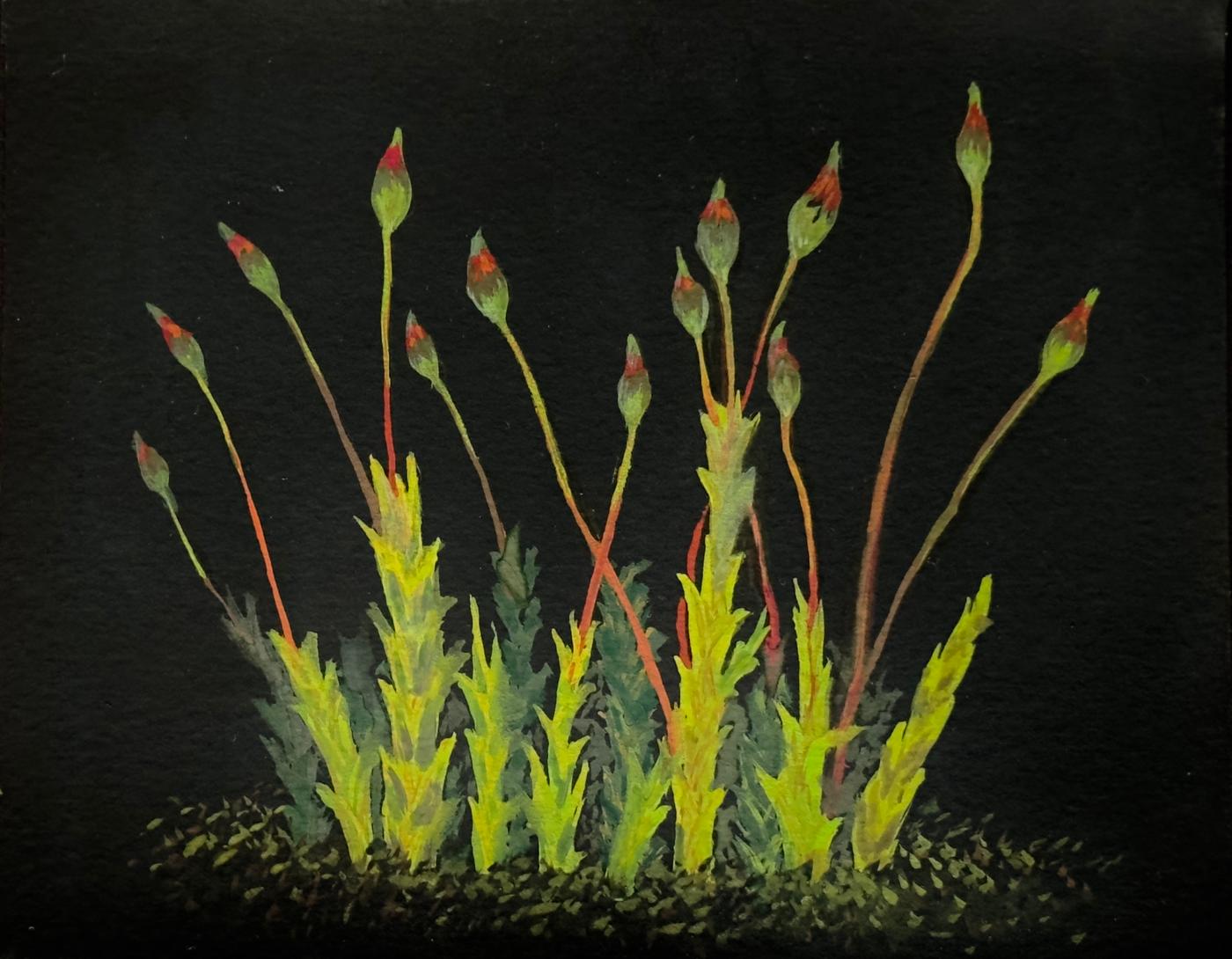
Status: Critically Endangered
Aongstroemia longipes is widely distributed in the coniferous forest zone of Eurasia and North America but is rare everywhere.
In Finland, it has a few occurrences across the country, with a total of 13 collected locations, five of which have current observations.
Dicranum groenlandicum
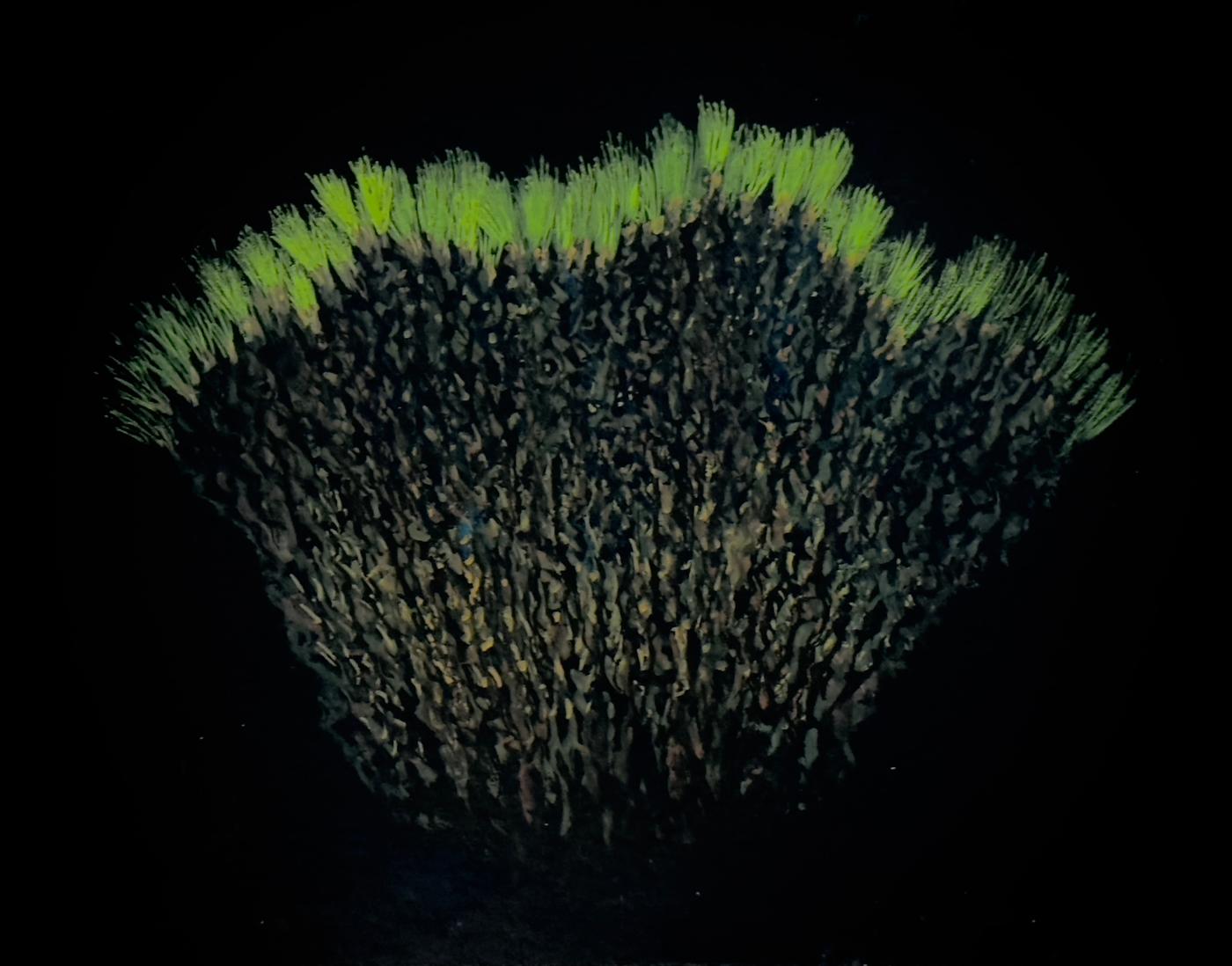
Status: Critically Endangered
Coscinodon cribrosus
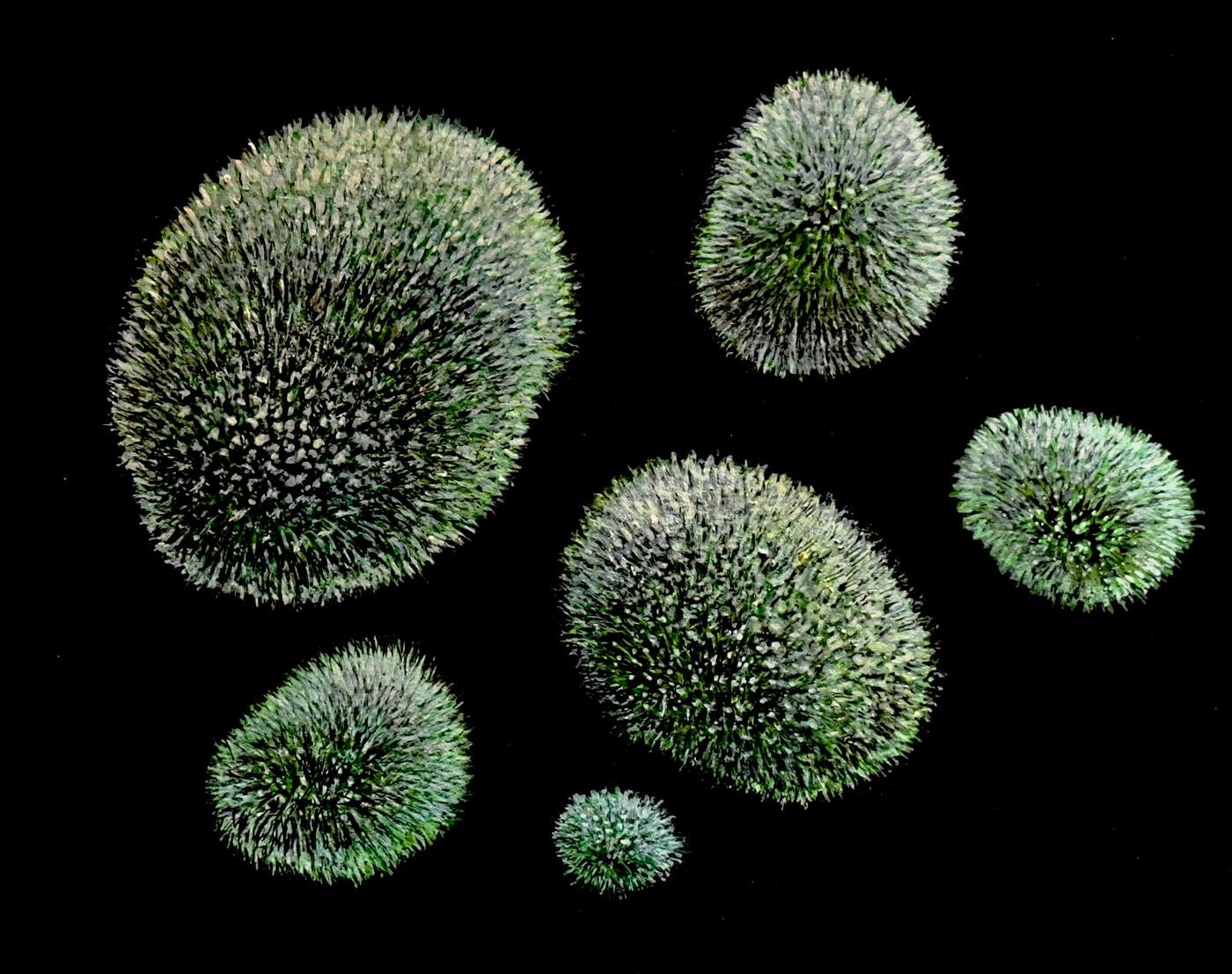
Status: Critically Endangered
Coscinodon cribrosus is a mountain species, rare in the coniferous forest zone.
Its distribution is characterized by rarity throughout its range and distinctive scattered occurrences. In Finland, there are seven known locations in different parts of the country.
Coscinodon cribrosus grows on easily weathering silicate rocks in crevices of rock faces, often in sunny, dry spots, usually on southern cliffs.
Polytrichastrum pallidisetum

Status: Critically Endangered
Polytrichastrum pallidisetum was believed to have disappeared from Finland's natural environment due to forest renewal activities, drainage, and peat extraction.
However, it was found in fairly ordinary forests in South Häme and North Karelia.
Bryum cryophilum
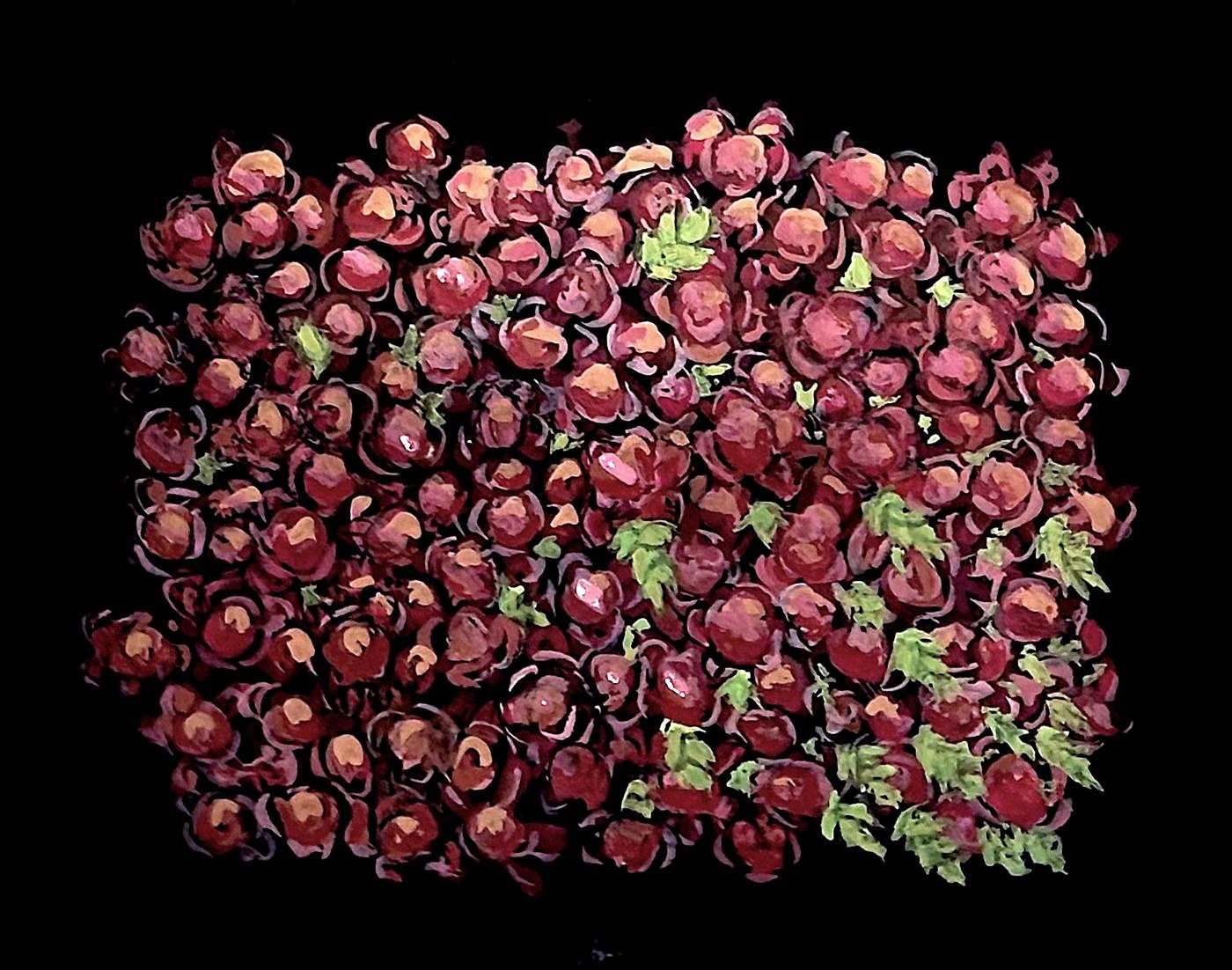
Status: Critically Endangered
Bryum cryophilum is an Arctic species found in the northern hemisphere's Arctic regions and mountains in Eurasia and North America.
It is a rare Arctic species in Finland, growing in suitable spring-fed habitats on the large fells of the northernmost Lapland.
Cryptothallus mirabilis
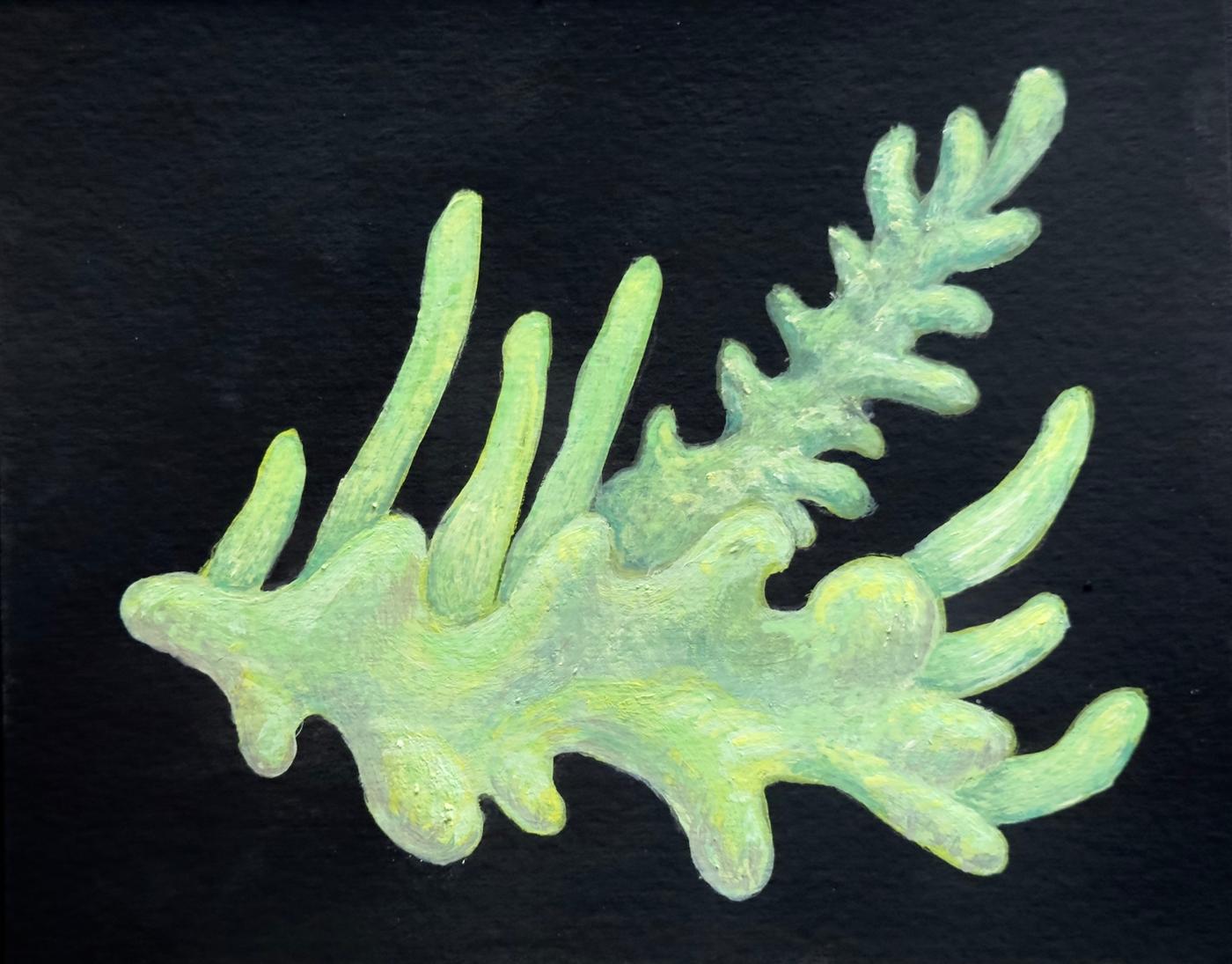
Status: Critically Endangered
Cryptothallus mirabilis is primarily a northern European maritime species.
In Finland, it is seemingly rare, with a wide but fragmented distribution. Currently, 12 occurrences are known in the country, ranging from Åland to Kittilä in Lapland, with four having recent observations.
As it lacks chlorophyll, the species is entirely dependent on fungal mycelium for nutrients.
Recent studies on the relationship between Cryptothallus mirabilis and its fungal host have shown it to be specialized as a parasite of Tulasnella mycorrhizal fungi, which live on birch and pine.
Mannia fragrans
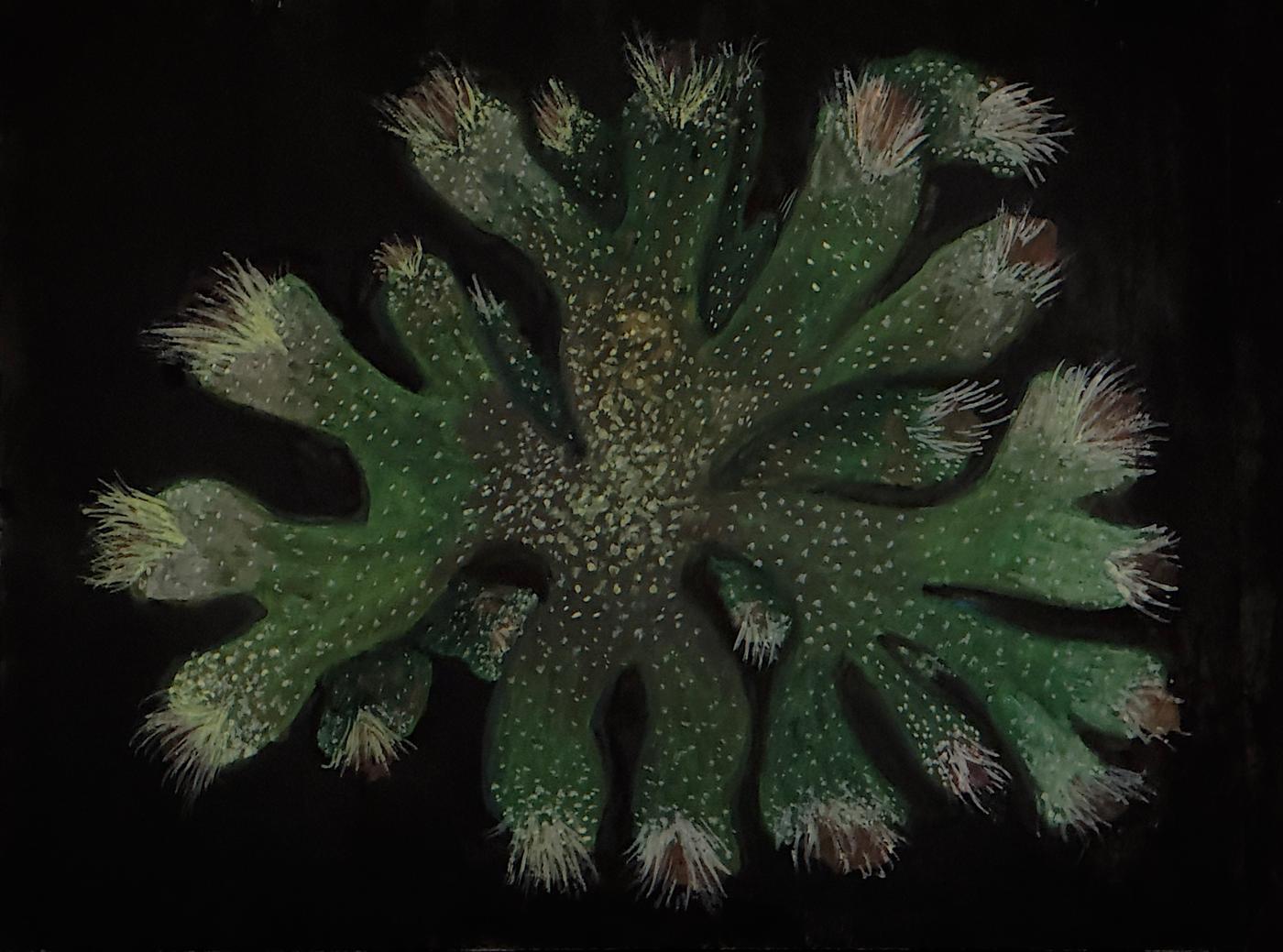
Status: Critically Endangered
Mannia fragrans is widespread in the temperate and cool regions of the northern hemisphere, including Europe, Asia, and North America. In Russia, it is known from the Republic of Karelia, near Lake Ladoga.
In Finland, occurrences are scattered from Southwest Finland to Koillismaa, with nine known locations, some of which have been long-standing. Suitable habitats for this species are naturally rare and small in Finland.
Mannia fragrans grows on bare, calcareous soil in sunny microclimates, typically in south-facing crevices of open alkaline rocks or cliffs. It cannot withstand competition from larger plants and may benefit from wildfires.
Conocephalum conicum
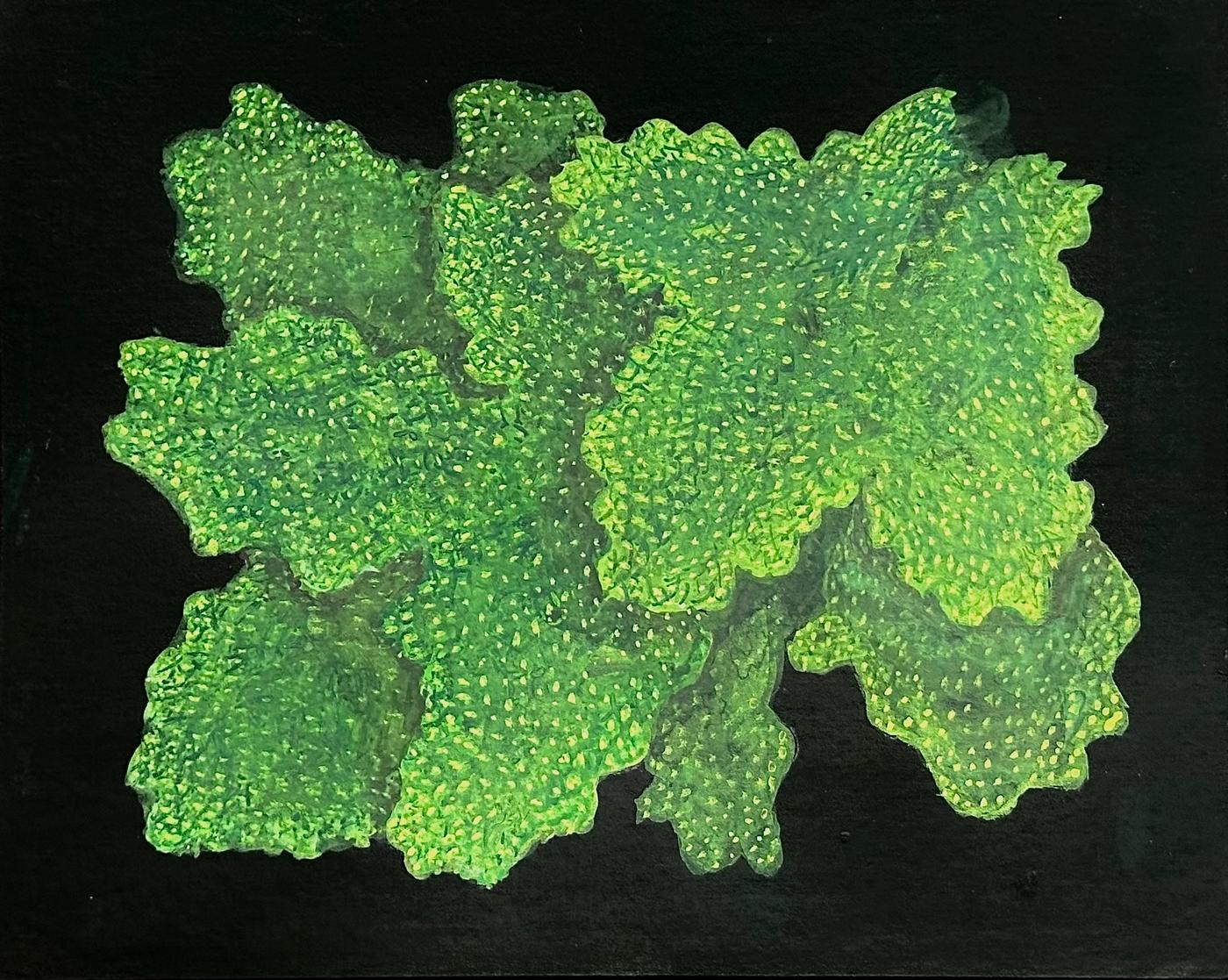
Status: Critically Endangered
Recent studies have shown that the previously widespread Conocephalum conicum actually comprises two distinct species. Including the close species, Conocephalum conicum is widely distributed across the temperate and boreal zones of the northern hemisphere.
In Finland, it is rare and mostly found in calcareous areas.
Moss grows on shady, moist calcareous rock faces and damp, calcareous soil along streams and springs. It requires nutrient-rich and permanently moist habitats.
Unlike other large thalloid liverworts, Conocephalum conicum is highly sensitive to drying out.
Finnish Environment Institute: Endangered mosses of Finland, 2009
laji.fi/en
luontoportti.com/en
